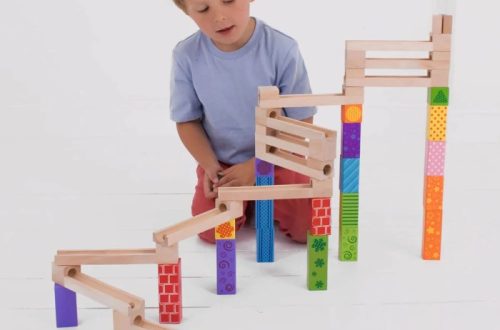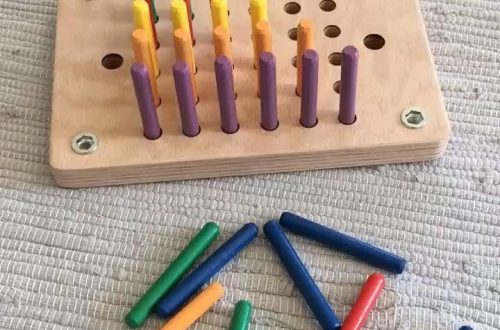What Are Montessori Sensory Toys?
Montessori sensory toys are specially designed tools that help children explore the world through their senses. These toys are based on the Montessori educational philosophy, which emphasizes hands-on learning, independence, and natural curiosity.
Sensory play is essential for early childhood development. It helps children develop fine motor skills, hand-eye coordination, problem-solving abilities, and cognitive growth. Montessori sensory toys provide a safe and engaging way for kids to learn through touch, sight, sound, and movement.
These toys come in many forms, including textured blocks, stacking rings, sensory bins, and musical instruments. Each toy is designed to stimulate different senses and encourage active learning. For example, a soft fabric ball can help with tactile development, while a wooden puzzle can improve spatial awareness.
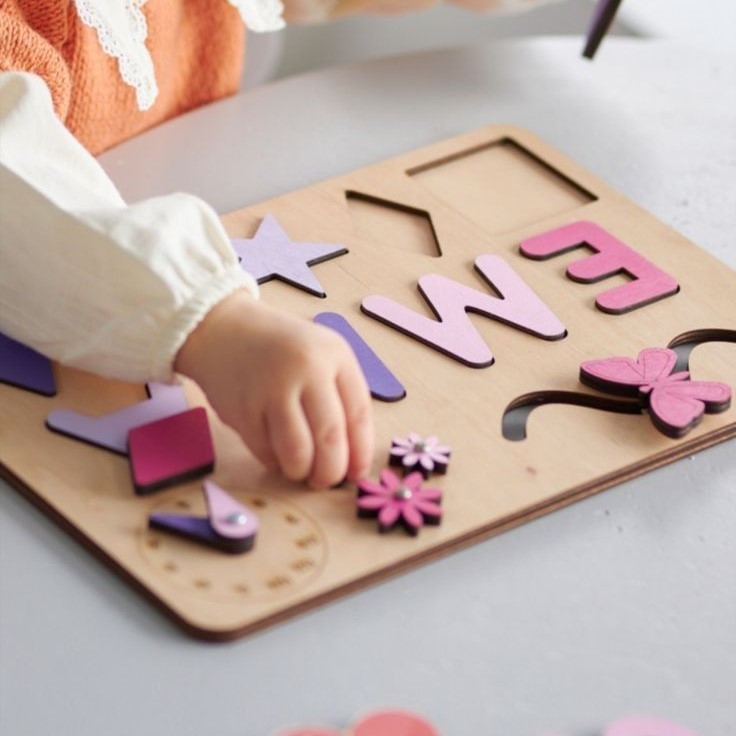
Using montessori sensory toys allows children to engage in self-directed play, which fosters creativity and confidence. They can explore at their own pace, making mistakes and learning from them naturally.
In short, montessori sensory toys are not just fun—they’re an important part of a child’s developmental journey.
The Role of Sensory Play in Child Development
Sensory play is essential for young children. It helps them understand and interact with the world. By engaging their senses, children develop cognitive, emotional, and physical skills. Montessori sensory toys are perfect tools for such activities.
How Sensory Play Stimulates Cognitive Growth
Cognitive growth is vital for a child’s early development. Sensory play stimulates their brain, enhancing learning and memory. Experiencing textures, sounds, and sights improves neural connections. These activities support language development and analytical skills. For example, exploring objects with varying textures boosts problem-solving abilities.
Montessori sensory toys, such as shape sorters, challenge kids to think and learn. These toys encourage curiosity and independent discovery. Such exploration helps improve focus and cognitive abilities over time.
Importance of Tactile, Visual, and Auditory Experiences
Tactile, visual, and auditory interactions are key for sensory development. Tactile experiences, like touching different surfaces, enhance sensory awareness and fine motor skills. Visual play, using colors and patterns, strengthens observation and differentiation skills.
Auditory experiences, like listening to varying tones, refine hearing and focus. Montessori sensory toys like bead mazes or music blocks integrate these sensory elements. This multidimensional approach nurtures a child’s ability to process and respond to the environment effectively.
What Makes a Toy Montessori?
Montessori toys stand out for their purposeful and educational design. They are crafted to teach specific skills. These toys align with the principles of Montessori education, focusing on child-led learning and independence.
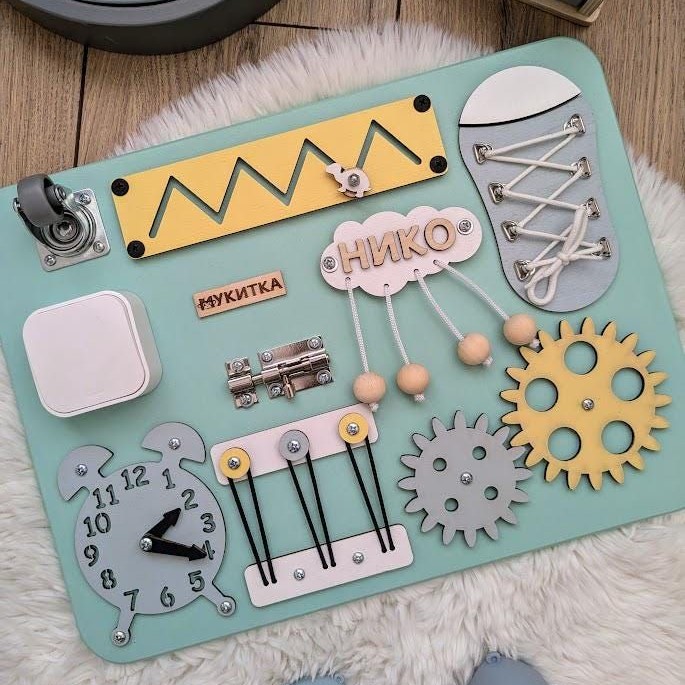
Montessori Principles in Toy Design
Montessori toys are based on the core principles of Dr. Maria Montessori’s method. First, they promote independence. Toys are easy for children to handle and explore on their own. Second, they focus on simplicity. Montessori toys avoid unnecessary distractions like flashing lights or electronic sounds. They often feature clean designs and neutral colors to help children concentrate.
Another principle is hands-on learning. Montessori toys encourage manipulation and experimentation. For example, a wooden stacking toy teaches balance and spatial awareness. Lastly, these toys follow the “control of error” concept. They allow children to identify and correct mistakes themselves, fostering problem-solving skills and confidence.
Characteristics of Montessori Sensory Toys
Montessori sensory toys are designed to engage multiple senses. They often use natural materials like wood or cotton, which provide unique textures for tactile exploration. These toys also emphasize real-life experiences. For instance, a toy kitchen helps children imitate daily activities and learn practical skills.
They are age-appropriate and grow with the child. For example, sensory balls are ideal for infants, while a bead maze suits toddlers. Montessori sensory toys are also open-ended. This means children can use them in various ways, sparking creativity and imagination.
Durability is another key trait. High-quality materials ensure the toys last for years, encouraging sustainable practices. Overall, Montessori sensory toys combine education and engagement, making learning enjoyable and effective for young children.
Benefits of Montessori Toys
Montessori sensory toys offer a wide range of benefits for young children. These toys are designed to encourage learning and development through hands-on exploration and sensory engagement. Below, we’ll discuss how they enhance motor skills, critical thinking, and concentration.
Enhancing Fine and Gross Motor Skills
Montessori sensory toys help children develop both fine and gross motor skills. Fine motor skills involve precise movements of smaller muscles, such as fingers. Toys like stacking blocks or threading beads improve hand-eye coordination and dexterity. Gross motor skills relate to larger movements, like crawling or jumping. Toys like balance boards strengthen core muscles and boost physical coordination. By practicing these skills, children build strength and confidence in their physical abilities.
Developing Problem-Solving and Critical Thinking Skills
Problem-solving is essential for cognitive growth, and Montessori toys excel in fostering these skills. Toys like shape sorters or puzzle games challenge children to think and reason. Sorting shapes teaches spatial awareness and logical thinking. Open-ended toys encourage creativity and flexible thinking, allowing children to explore multiple solutions. Montessori toys often include a “control of error,” enabling kids to identify and correct mistakes independently. This boosts their ability to analyze situations and solve problems on their own.
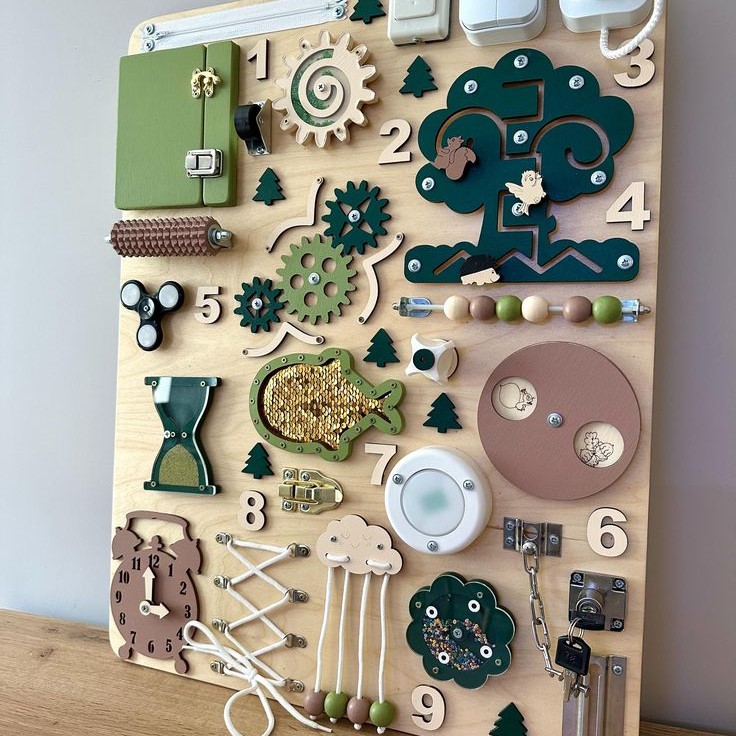
Boosting Concentration and Independence
Concentration is vital for learning, and Montessori sensory toys naturally improve focus and attention spans. These toys are simple and free from overwhelming distractions like flashing lights. Activities such as bead mazes or building towers require sustained focus, encouraging children to stay engaged. Montessori toys also promote independence. They are designed for children to use and explore freely, helping them gain self-confidence. This sense of autonomy inspires kids to learn and play proactively, setting a foundation for lifelong learning habits.
Popular Montessori Toys
Montessori sensory toys come in various forms, all promoting learning through interaction and exploration. They are carefully designed to engage multiple senses and encourage hands-on education. Below are some popular types of Montessori sensory toys that are beloved by parents and educators.
Wooden Toys and Natural Materials
Wooden toys are a cornerstone of Montessori sensory learning. Their natural textures engage tactile senses. These toys are durable, eco-friendly, and safe for children to use. Examples include wooden stacking blocks, puzzles, and building sets. The simplicity of wooden toys encourages focused play and creativity. They also promote fine motor skill development and strengthen hand-eye coordination.
Shape Sorters and Puzzle Games
Shape sorters and puzzles challenge critical thinking and problem-solving abilities. Toys like these teach spatial awareness, logical reasoning, and matching skills. Children must manipulate pieces to fit them into corresponding slots or solve patterns. Shape sorters are excellent for fostering dexterity and analytical thinking. Puzzle games grow with children, offering more complexity over time to further learning.
Sensory Balls and Bead Mazes
Sensory balls and bead mazes combine tactile, visual, and motor skill engagement. These balls are ideal for infants and toddlers as they encourage crawling and grasping. Bead mazes enhance fine motor skills through pinching and sliding movements. They also improve focus and attention spans as kids follow colorful beads through winding tracks. Both toys stimulate curiosity while supporting early development.
DIY Montessori Toys
Creating DIY Montessori sensory toys is a budget-friendly way to promote child development. Homemade toys can be tailored to engage your child’s senses and spark creativity. These toys encourage hands-on learning while fostering essential skills like problem-solving and motor coordination. By making your own Montessori-inspired toys, you can also repurpose everyday items to create meaningful play opportunities. Below are practical ideas for crafting thoughtful sensory toys.
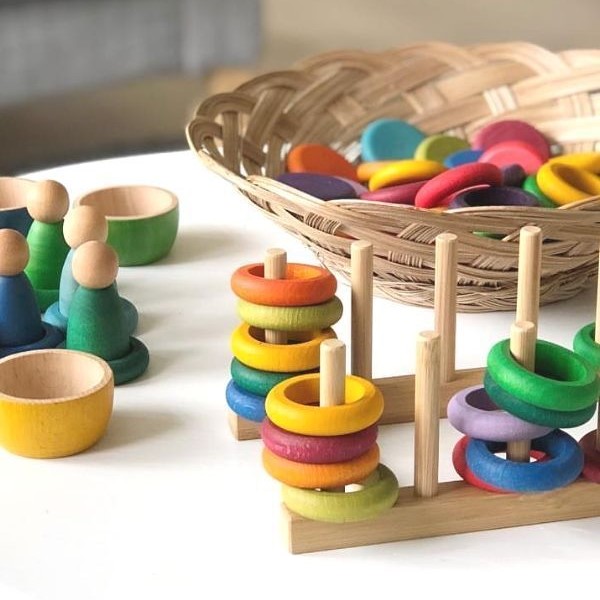
How to Create Affordable Homemade Toys
Homemade Montessori toys are simple to make with basic materials. Start by focusing on single-skill activities such as stacking or sorting. Materials like cardboard, felt, and wooden dowels work well and are inexpensive.
- Craft a Sensory Board: Glue fabrics like velvet or burlap to a board for tactile exploration.
- Build a Shape Sorter: Cut shapes into cardboard boxes; children can sort based on size and design.
- Make Threading Beads: Use large pasta shells strung on shoelaces for fine motor skill development.
Choose natural, safe, and durable materials to ensure safety and sustainability. Age-appropriate designs also allow kids to learn and enjoy play without frustration.
Utilizing Everyday Items for Sensory Play
Everyday household items can be repurposed into excellent Montessori sensory toys. These items provide unique textures and experiences without costing extra money.
- Create a Rice Bin: Fill a container with rice and place buttons or toys inside for sensory digging.
- Bottle Shakers: Add beans or beads to empty bottles to create auditory stimulation.
- Ice Cube Painting: Freeze colored water into ice cubes for children to paint with as they melt.
When using everyday items, always supervise for safety and ensure all pieces are non-toxic and child-friendly. Incorporating these toys into daily activities helps children engage with learning in interactive and enjoyable ways.
Age-Appropriate Montessori Sensory Toys
Montessori sensory toys are most effective when tailored to a child’s developmental stage. Choosing the right toys ensures they support age-specific skills and interests. Below, we explore suitable toys for different age groups.
Toys for Infants (0-12 Months)
Infants experience the world mostly through their senses. Toys for this age should foster exploration and sensory development.
- Soft Sensory Balls: These toys offer various textures for tactile exploration, improving grip and curiosity.
- Rattles: Lightweight and easy to hold, rattles provide auditory stimulation and strengthen grasp reflexes.
- High-Contrast Cards: Bold, black-and-white patterns enhance visual focus and early recognition.
- Stacking Rings: These help infants practice coordination and develop spatial awareness.
Always choose non-toxic, safe materials to ensure infants can explore freely.
Toys for Toddlers (1-3 Years)
Toddlers are active and curious learners. Their toys should promote motor skills and problem-solving.
- Shape Sorters: These develop analytical thinking and hand-eye coordination as toddlers sort and fit shapes.
- Pull-Along Toys: Improve gross motor skills by encouraging walking and balance.
- Stacking Blocks: Enhance creativity, spatial awareness, and fine motor control through building.
- Bead Mazes: Strengthen fine motor skills and focus as toddlers move beads along colorful tracks.
Toys for this age should be sturdy and engaging, allowing repeated use without frustration.
Toys for Preschoolers (3-5 Years)
Preschoolers benefit from toys that encourage creativity, logical thinking, and independence.
- Puzzles: Gradually introduce more complex puzzles to challenge problem-solving and pattern recognition.
- Toy Kitchens: Promote imaginative play while teaching real-life skills like cooking and organizing.
- Lacing Beads: Foster fine motor skills and concentration through threading and pattern-making.
- Balance Boards: Improve physical coordination and core stability.
Preschoolers thrive on toys that allow open-ended play, supporting creativity and confidence in learning.
By offering age-appropriate Montessori sensory toys, you nurture essential developmental milestones for each stage.
Tips for Incorporating Montessori Sensory Toys at Home
Integrating Montessori sensory toys into your daily routine can boost your child’s development. A well-organized environment ensures children make the most of these learning tools. Below are practical tips to incorporate Montessori principles effectively at home.
Setting Up a Dedicated Sensory Play Area
Creating a dedicated play area encourages focus and independent learning. Follow these steps to set up an effective Montessori space:
- Choose a Quiet Spot: Select a calm area free from distractions. This helps children concentrate on their activities.
- Keep it Organized: Arrange toys neatly on low shelves, making them accessible for your child.
- Rotational Systems: Use only a few toys at a time. Rotate them regularly to keep interest high.
- Natural Materials: Include wooden or fabric toys to create a sensory-rich environment.
- Incorporate Open Floor Space: Allow room for movement and exploration, enhancing both motor skills and creativity.
A dedicated sensory area inspires children to explore and develop their skills freely.
Encouraging Independent Play and Exploration
Independent play is at the heart of Montessori education. It helps children build confidence and decision-making skills. Here’s how to encourage it:
- Start with Simple Choices: Let children choose between two or three toys to promote autonomy.
- Provide Guidance: Show how to use the toys but avoid over-directing their play.
- Praise Efforts: Encourage their curiosity and attempts, even if they make mistakes.
- Limit Screen Time: Ensure their focus remains on physical, hands-on toys instead of gadgets.
- Set Predictable Routines: Incorporate Montessori play into the daily schedule to make it familiar and consistent.
By fostering independent play, children develop creativity and problem-solving abilities. These habits prepare them for more complex learning later on.
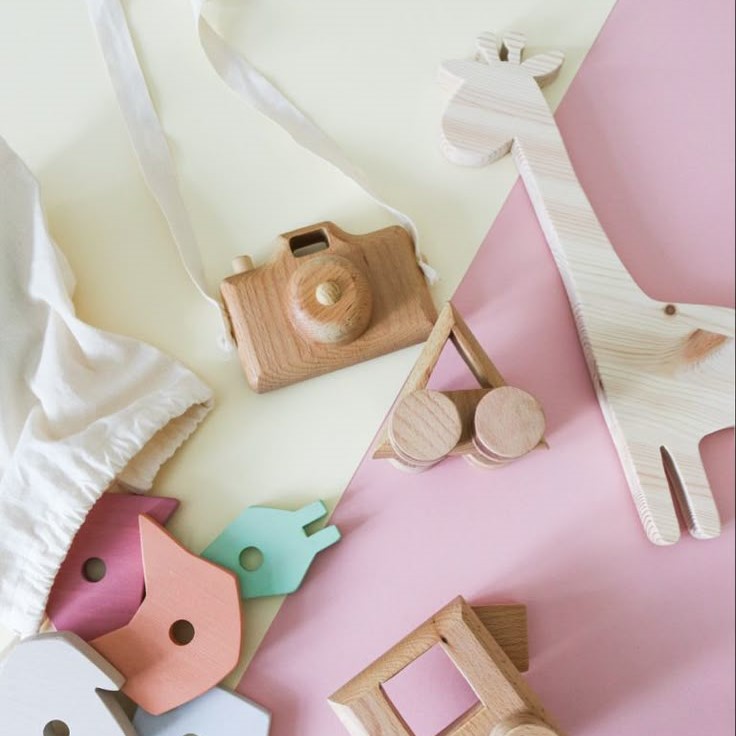
Conclusion
In conclusion, montessori sensory toys are an excellent investment for any parent who wants to support their child’s development. These toys are not only fun but also educational, helping children grow in important ways through sensory play.
Whether you’re looking for montessori sensory toys for babies, toddlers, or older children, there are plenty of options available that suit different needs and budgets. The key is to choose toys that are safe, engaging, and aligned with the Montessori approach.
By encouraging exploration, creativity, and independence, these toys help children learn in a natural and meaningful way. They also give parents the opportunity to spend quality time with their kids while supporting their development.
So, if you’re looking for ways to enhance your child’s learning and growth, consider adding montessori sensory toys to your home. They are a valuable resource that can benefit your child for years to come.


